|
To say that times are different would be a gross understatement. Never have we had to "do school" quite like this, as our calls to be a teacher/counselor/personal cheerleader/additional caregiver extraordinaire have been kicked up a notch to now be able to accomplish all of this in a virtual setting (depending on what's happening in your local community). For my school community specifically, this has meant longer hours, more detailed planning, and an intensive blur between home and work that at times has left us all feeling dazed and confused, which means our students are struggling even more to recognize the line between home and school in a way that can be disorienting and simply terrorizing in nature.
As I'm writing this, I'm actively thinking of how to stay ahead of my students' needs to the extent I am privileged to know what those needs actually are, while tempering my desires to do more than what is humanly possible, personally sustainable and professionally appropriate considering we can't do it all. But what for me remains most important to share is encouragement to continue offering all of the love, grace and support we know we need as adults right now to the children we are honored to work with from the comforts (or potential hells, or more than likely somewhere in between) of their homes, to find ways to build community, spark joy, and cultivate belonging in a space that can easily demolish possibility. How you do this will look and feel different but I implore us all to continue to think beyond what is required and to consider what is humanizing and affirming, how we can find moments to infuse care and covering between managing the chat, the waiting room, the gallery view, the assignment task at hand, the school mandates, the district mandates or anything else you can think of that we are having to consider. So as you continue to plan intentionally for how you will check off all of these boxes, I hope you will add your own boxes for joyful and authentic relationship-building, knowing that we all need it right now, and that our babies need it the most. So whether you encourage an impromptu pet showcase, invite siblings and guardians to stop by and say hello or even join live sessions, encourage students to eat and take bathroom breaks as needed, carve out time to geek out over a favorite TV show, or make a playlist of all of your students' favorite songs for work time-- I encourage you to get even more creative, be even more patient, and extend even more grace than you normally would during the traditional in-person school year because our very psychological and spiritual lives depend on it if we are to make it to the other side of this-- hopefully stronger and more connected than before. With endless love and respect, Mrs. Wingate
0 Comments
Recently, we’ve been working closely with Historical Thinking Skills, discussing the ways in which Sourcing and Contextualization especially are super important for historians to consider when considering any given document. With Sourcing, we’ve been focusing on closely analyzing documents for the extent to which we can find them credible or useful to answer particular historical questions. It’s important to note that sourcing doesn’t have much to do with your actual liking or agreeing with a source or its author, but its usefulness. This is especially important when looking at sources that may reflect racist points of views that rightfully trigger students. Even these sources can be useful, especially if we are trying to examine a particular set of attitudes that produced a particular set of outcomes during a specific historical period. When Sourcing, I push students to consider the following:
“This 1853 magazine was written by contributor N.B. Cloud. It is somewhat credible because even though it features an expert opinion on how to manage a successful cotton plantation, also reflects bias against the actual enslaved people whose labor was exploited to make the cotton plantation possible.” In contextualization, we are aiming to situate sources within the particular time period in which they were created. This is not to “excuse” the nature of a given source or to minimize the impact it might have had, especially on marginalized communities, but to understand the wider context in which it was created. One again, students consider HIPP but also Little C (Local Context) and Big C (Global Context) using a graphic organizer made of concentric circles. In this way, they are able to compare and contrast “old” documents with “new information” in order to determine the extent to which a historian’s understanding of the original document might have changed, if at all. Students, once again, use language from the historical credibility spectrum to support their answers. The CFS is as follows:
"While Document A talks about how the soil and climate are different in the North and South (and that’s why the North didn’t rely on slavery), Documents B and C actually reveal that people in the North didn’t “own slaves” because they could earn a bigger profit if they hired people, rather than “own” them and take care of them for life. In the South, “owning” enslaved people was the only way to make a profit if they had a cotton plantation because it was such hard work and you could not pay people to do it. This new information completely changes my understanding of Document A because they did not include this information, which shows the author might have had a bias or a limited perspective on what actually produced labor differences in the North and South." Though this is undoubtedly a regional academic initiative of ours, this focus has nonetheless produced meaningful conversations among students, leading them to question the narratives they see in the news and other media sources, as well as the narratives they share amongst each others (for example, the extent to which a student can be considered credible in telling their “side” of the story in a fight). Pushing these historical thinking skills has elevated academic and informal language, student writing and thinking, and given us a wider and deeper lens into the past that goes beyond the rote and useless memorization of historical facts. I am excited to see how we continue to develop these skills and the ways in which students continue to interrogate not only the world of the past, but also the world we currently live in. I’ve attached some resources for reference and welcome any questions and/or feedback that you may have!
Shoutout to our School Leader who signed off on me being able to order a class set of the 1619 Project! I was almost certain the order wouldn't go through because they've been flying off the (virtual) shelves but I was able to land a set and my students couldn't be any happier! We've been discussing the project in great detail and the extent to which it centers a set of narratives that have often been relegated to the backburners of American history. As we begin our school year talking about alternative perspectives, Historical Thinking Skills, and the makings of America, I am so very excited that we will be doing so with a text set that aims to illuminate the many ways in which this country was predicated on the need for the enslavement and exploitation of others.
We just wrapped up Unit 3: The Thirteen Colonies, continuing to explore our year-long essential idea that culture reflects environment. Students gawked at the idea that before Google Flights, people had to visit travel agencies to figure out travel plans. After the initial wave of shock, they were excited to learn we'd be making brochures to attract new settlers to the colonies. Each page was written using a particular text structure to reinforce writing skills and students did not disappoint! I've included a few examples below. We also learned about voting rights in colonial America and the ways in which communities have historically been disenfranchised in order to maintain the power of the few. We discussed the history of voter suppression with an emphasis on poll taxes and literacy taxes, watching a clip from Selma that shows voter intimidation.
We engaged in a discussion about contemporary methods of suppression and forms of election meddling and student submitted written responses on Google Classroom, answering the following question: Does every voice really matter? One student wrote: Based on what I learned, not every voice matters. They try to make you think that everyone can vote but they actually can't. In many ways, they are making it impossible for people that do not support current power systems to vote. Not everyone's voice really counts. I read that states removed 16 million+ voters from polls in recent years. In Georgia alone, 70% of voters purged from the rolls were Black. This proves that not every voice really matters. It's incredible how engaged students become in material that can sometimes feel distant and irrelevant to their daily lives when we supplement our curriculum with evidence of how historical trends persist! Since I've been back to work, my colleague Chellsee and I have been committed to highlighting the unique cultures of our students during our Team & Family celebrations (think all school assemblies) each month. This morning, and for the first time as a school community, we celebrated Arab American History Month (insane because we have such a sizable Yemenis population). Students were so excited to showcase their beautiful cultures, reminding us that though grounded in common faith, their cultures are very diverse. Just a reminder that representation matters SO much and that if we're ever to aim for the collective, we have to understand the importance of acknowledging the individual as well.
During Unit 2, students explored the positive and negative effects of the Columbian Exchange. Students studied European population booms due to the introduction of crops such as the potato, as well as the Transatlantic Slave Trade and the lasting effects of transporting 12+ million enslaved Africans to the New World. Students learned the power of language and the importance of using the term enslaved as opposed to slave and were able to describe the extent to which African peoples were dehumanized for profit. This unit culminated in a Socratic Seminar in which students completed pre-readings and exercises to participate in a whole-group conversation completely led by themselves. I was thoroughly impressed by how well students were able to abide by our socratic norms, namely in regulating themselves, using text-based evidence, and encouraging others to step back/up into the conversation. If you're interested in accessing the materials for this activity, visit my Teachers Pay Teachers site! Elaf was clearly excited about my picture :)
It's wild to think that I've been teaching for six years, which means this will be the sixth annual Black History Month program I have organized at my school. Students are currently busy conducting research in order to produce posters that will be on display at our event at the end of the month and as a whole school, we are participating in a door decorating contest to celebrate the accomplishments and contributions of notable individuals. I'm always excited to expose my students to individuals they may have never heard of before and try to shy away from the widely accepted "canon" of notable Black Americans so that students can learn about and appreciate the everyday richness of Black History that isn't always tied to fame. I'm eager to share their projects later this week and for now will leave you with my current bulletin board and the project exemplar I created as a model for their projects based on the supremely famous and magical Toni Morrison :)
Our year-long essential understanding revolves around the idea that culture reflects environment. In other words, what we do, what we believe in, how we act is directly tied to where we live. This theme re-presents itself throughout our curriculum but also in the world around us. I use this as a guide not only in the classroom but in also discussing contemporary issues that can leave students feeling worried and confused.
To kick off this theme, we learned about the five primary Native American cultural regions and how various groups of people had to adapt to their environment in order to survive. From this different cultures emerged that reflected their unique environments. Students studied the regions, their similarities and differences, as well as their unique customs and traditions. We spent a significant amount of time focused on Native American origin stories, which reflected the unique ways people tried to explain their natural world (without the aid of modern Science and Google!) We studied stories and worked backwards to identify environmental themes that could pinpoint the specific culture they emerged from. To end the unit, students wrote an origin story of their own, including details that would signal to other students what cultural region their story might have emerged from. I was both amazed and impressed by their creativity and encourage you to try this with your own students in order to help reiterate the beauty and diversity of culture that emerges from our varied backgrounds and environments. The materials can be found here on my Teachers Pay Teachers dashboard. I was fortunate to be able to take an extended maternity leave and undoubtedly a little nervous to return after having not met the new 5th graders. Despite my worries, the new semester is off to a great start and I am really enjoying getting to know another class of students. To help speed the "getting to know each other process", we created these fun 2019 foldables that combined New Years intentions with fun information about ourselves. Per usual, I shared my exemplar with students and let them have fun creating their own. Such a great way to start the year!
I had the incredible opportunity to present the Team & Family award to Ms. Gonzalez last night, a truly phenomenal colleague and dear friend of mine who goes above and beyond to make the impossible possible for our students, staff, and community stakeholders each and everyday!
|
|||||||||||||
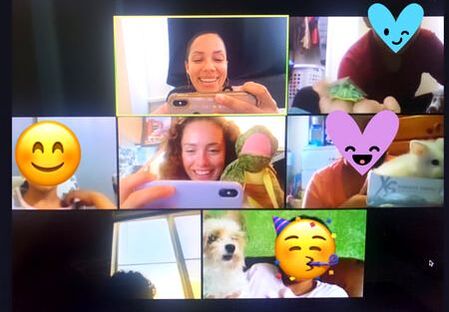
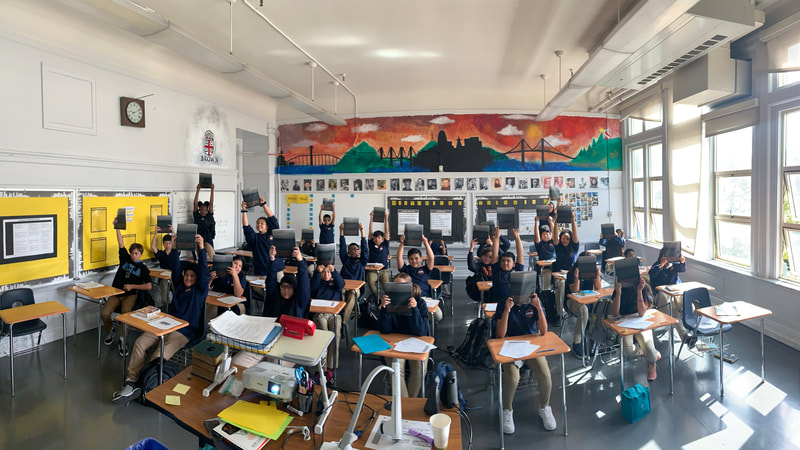
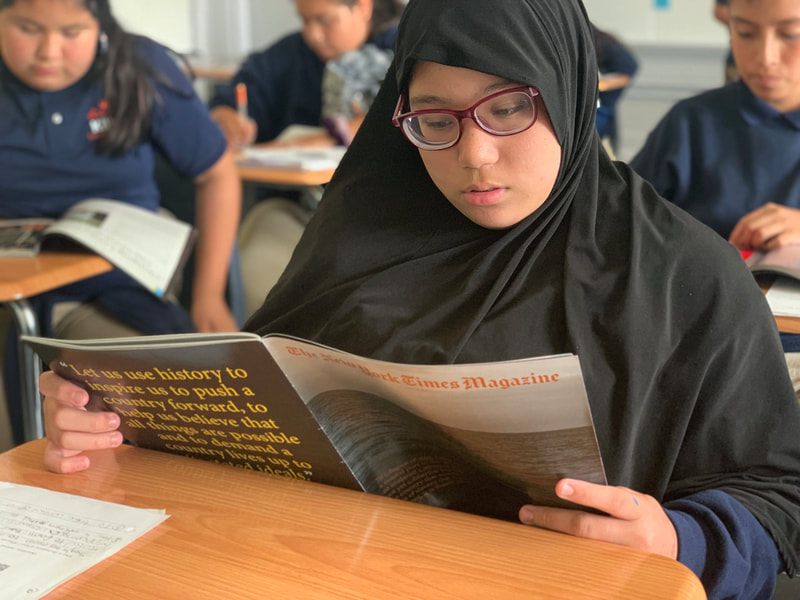
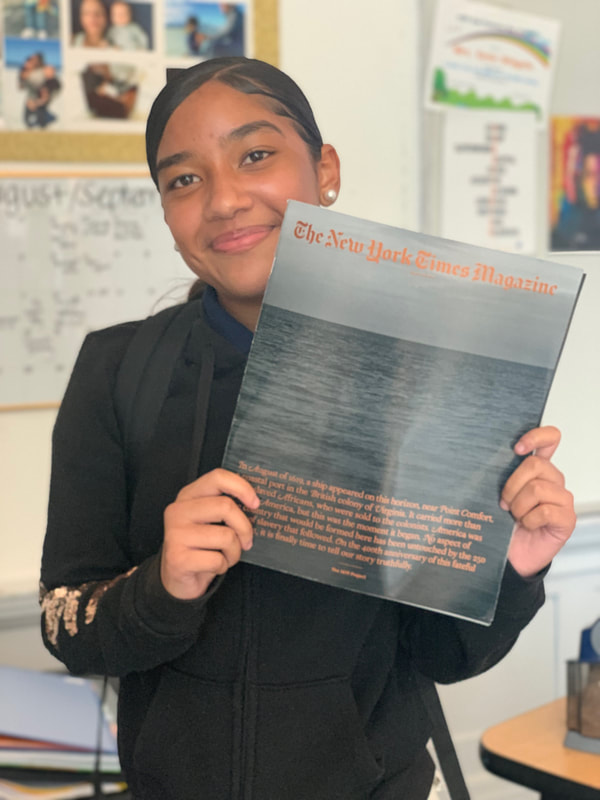




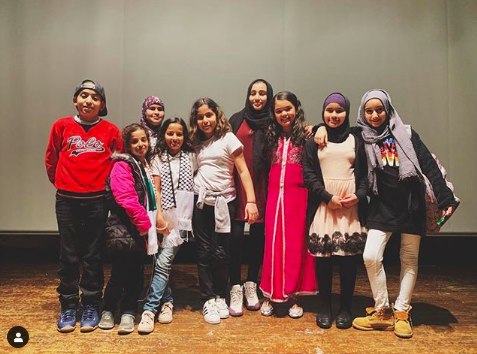







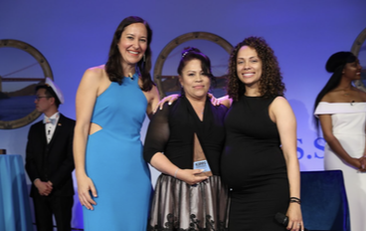


 RSS Feed
RSS Feed
